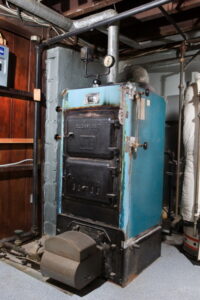A gas furnace is one of the most reliable heating systems available, but like any mechanical system, it will experience wear and tear over time. While a well-maintained furnace can last 10-15 years, certain components are more prone to failure and may require repairs—or even replacement—before the furnace itself reaches the end of its service life. Premier Heating & Air has seen firsthand how regular maintenance and furnace repair in Dublin, GA can prevent premature breakdowns and keep furnaces running efficiently.
Here are the gas furnace parts most likely to fail and what you can do to extend their lifespan.
1. Ignitor or Pilot Light
Older gas furnaces rely on a standing pilot light, while modern models use an electronic ignitor. Both are essential for starting the heating process, but they’re also among the most common failure points. Ignitors wear out over time due to repeated use, and pilot lights can become clogged or extinguished due to dirt and debris.
- Prevention Tip: During regular maintenance, we check the ignitor’s condition and clean the pilot light to ensure reliable operation.
2. Heat Exchanger
The heat exchanger transfers heat from the combustion process to the air circulating through your home. Over time, cracks can develop due to metal fatigue from the constant expansion and contraction during heating cycles. A cracked heat exchanger can be dangerous, potentially allowing carbon monoxide to leak into your home.
- Prevention Tip: Annual inspections help catch small cracks before they become hazardous. Regular filter changes also reduce strain on the heat exchanger by maintaining proper airflow.
3. Blower Motor
The blower motor pushes heated air through the ductwork, ensuring even distribution throughout your home. If the motor wears out or the bearings become damaged, the furnace may struggle to circulate air properly, leading to uneven heating and higher energy bills.
- Prevention Tip: Lubricating moving parts and cleaning the motor during maintenance can prevent overheating and premature wear.
4. Flame Sensor
The flame sensor detects whether the burner has ignited properly. If it doesn’t sense a flame, it will shut off the gas supply for safety reasons. However, dirt and grime can build up on the sensor, causing it to malfunction and shut the furnace down unnecessarily.
- Prevention Tip: Cleaning the flame sensor annually can prevent false shutdowns and ensure the furnace operates efficiently.
5. Gas Valve
The gas valve controls the flow of fuel to the burners. Over time, it can wear out, corrode, or become stuck, leading to ignition issues or a complete failure to heat. A faulty gas valve can also pose a serious safety hazard.
- Prevention Tip: Routine inspections ensure the gas valve is functioning correctly, reducing the risk of gas leaks or furnace failures.
6. Limit Switch
The limit switch acts as a safety device, shutting off the burners if the furnace overheats. If it malfunctions, it may cause the furnace to short cycle (turn on and off frequently) or fail to operate at all.
- Prevention Tip: Regular maintenance includes testing the limit switch and ensuring proper airflow to prevent overheating issues.
7. Thermostat
While not technically part of the furnace itself, the thermostat controls when and how often your furnace runs. If the thermostat malfunctions, it can cause erratic heating cycles, leading to discomfort and inefficient energy use.
- Prevention Tip: Checking thermostat calibration and replacing batteries regularly can help avoid unnecessary furnace issues.
If you suspect any of these furnace components are failing—or if you want to schedule preventive maintenance—contact Premier Heating & Air today. We’ll ensure your furnace stays in peak condition, keeping your home warm and safe all winter long!


